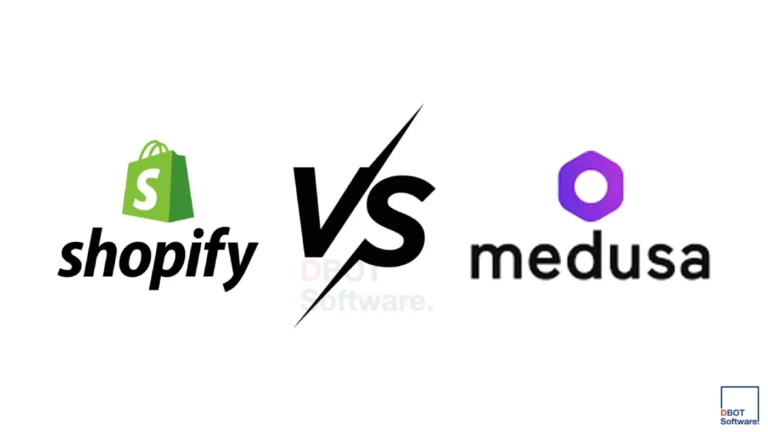I. Introduction: The Modern CTO’s Imperative – Speed, Innovation, and Strategic Partnerships
In today’s digital economy, CTOs, product leaders, and innovation teams face intense pressure to innovate faster, smarter, and with tighter budgets. No longer just technical gatekeepers, they are strategic leaders tasked with driving transformation and unlocking new business value, all while avoiding costly missteps.

At DBot Software, we’ve developed an AI-powered product development framework that helps teams go from raw idea to market-ready MVP in weeks, not months. It’s not just about speed, it’s about precision, validation, and smarter execution.
In this post, we unpack the biggest roadblocks in digital product development and show how DBot’s AI-driven approach—plus the strategic edge of our Bangkok delivery center—helps ambitious teams launch faster, better, and with confidence.
II. Navigating the Digital Minefield: Common CTO Pain Points in Product Development
The path to digital product innovation is often fraught with significant challenges for CTOs. These are not merely technical hurdles but strategic roadblocks that can derail initiatives and drain valuable resources.
Many organizations grapple with the persistent challenge of legacy systems and internal resistance to change. Outdated infrastructure hinders seamless integration with new technologies and significantly slows down progress. As an illustration of this widespread issue, a survey indicated that nearly 90% of large companies with over 10,000 employees still ran Windows 7 in 2020, despite its end of support, underscoring the pervasive nature of legacy systems. Compounding this technical debt is internal resistance to change, where fear of the unknown or comfort with existing processes can actively sabotage digital initiatives. This impacts project timelines and employee morale, ultimately affecting the speed and success of digital transformation.
Another critical concern is the crippling tech talent gap. Finding and retaining skilled professionals, particularly in high-demand areas such as AI, cybersecurity, and data analytics, remains a significant hurdle. The tech industry faces a substantial skills deficit, with 70% of leaders acknowledging this challenge. This intense competition for specialized skills drives up costs and increases turnover rates, making it exceedingly difficult for companies to build and maintain robust in-house teams capable of driving innovation. A lack of specialized talent directly impacts a company’s ability to innovate and execute complex digital projects, forcing compromises on quality or significant delays.
Budget constraints and resource allocation dilemmas further complicate the landscape. Digital transformation demands substantial investment in technology, training, and infrastructure. However, many companies struggle to allocate sufficient budgets, often leading to fragmented strategies and suboptimal outcomes. While global IT spending is projected to reach $5 trillion in 2024, indicating a growing recognition of digital investments, securing adequate funding for comprehensive digital initiatives remains a core concern for CTOs. Under-resourcing can result in piecemeal development, where only parts of a digital strategy are implemented, leading to an incomplete or inefficient product that fails to deliver expected return on investment.
Perhaps one of the most disheartening challenges is the high stakes of MVP failure and slow time-to-market. A significant proportion of MVPs fail not due to technical flaws, but because the product being built was simply the wrong solution for the market. This highlights a critical need for robust validation before substantial investment. Traditional development cycles are often protracted, hindering agility and innovation, and frequently resulting in missed market opportunities. Startups, in particular, face acute pain points related to a lack of traction, intense competition, and product development hurdles. The core purpose of an MVP is to answer fundamental questions: will people use this solution, are they willing to pay for it, and what features do they truly care about? Without rigorous, data-backed validation, these critical questions remain unanswered, leaving development efforts to guesswork. A failed MVP wastes precious budget and momentum, while slow time-to-market allows competitors to seize market share, undermining the entire product initiative.
The various challenges faced by CTOs are not isolated issues but are deeply interconnected. For instance, the “lack of skilled professionals” directly impacts the “time-to-market” and “product development” capabilities, making these processes slower and more expensive. This, in turn, exacerbates “budget constraints”. Furthermore, if an organization lacks the internal talent to properly validate ideas, it becomes significantly more likely to “build the wrong thing” , leading to MVP failure and further wasted budget. This interconnectedness implies that a solution addressing only one pain point in isolation may prove ineffective. A truly transformative partner must offer a holistic approach that simultaneously tackles talent gaps, accelerates development, optimizes costs, and de-risks product validation.
Moreover, the “resistance to change” within organizations and the high demand for skilled professionals often create a hidden cost of attempting to manage all digital product development internally. The “costly and complex” nature of integrating new technologies with legacy systems , combined with the “high demand for talent” , means that internal efforts can be inefficient, expensive, and slow. This suggests that an external partnership can be a strategic bypass, allowing CTOs to access specialized expertise immediately and mitigate the organizational friction often associated with radical internal change. It enables faster results by circumventing internal bottlenecks rather than trying to overcome them head-on.
The explicit observation that “Most MVPs fail not because of the tech—but because they were building the wrong thing” [User Query] underscores a fundamental flaw in many traditional development processes: building without sufficient validation. The cost of failure increases exponentially the later a flawed idea is discovered in the development cycle. Therefore, investing in robust, AI-powered validation before significant development, as DBot does, is not merely a best practice; it is a critical risk mitigation strategy that directly impacts budget efficiency and time-to-market. This approach shifts the focus from simply building to building the right thing, ensuring resources are applied effectively.
III. DBot’s AI-Powered Framework: Accelerating Innovation from Idea to Scale
At DBot Software, the approach goes beyond conventional development; it empowers the entire product development lifecycle with AI to ensure unparalleled speed, precision, and market fit. This AI-native approach is not merely compressing timelines; it is fundamentally transforming the development process by democratizing development and fostering an unprecedented synergy between business and technology. Early adopters of AI in the Software Development Lifecycle (SDLC) have already observed significant reductions in operational costs and development time. Projections indicate that by 2028, development teams leveraging AI tools throughout the SDLC are likely to see productivity gains ranging from 25% to 30%.
| Aspect | Traditional Software Development | DBot’s AI-Driven Development (MVP Focus) | Key Benefit for CTOs |
|---|---|---|---|
| Time to Market (MVP) | Months (e.g., 4-6+ months) | Weeks (e.g., 2-4 months, often 50% reduction) | Rapid Market Entry: Quicker validation and competitive advantage. |
| Cost Efficiency | Higher (manual effort, potential rework) | Significantly Lower (reduced developer hours, less rework, optimized budget) | Optimized ROI: Better budget allocation, making innovation more accessible. |
| Idea Validation | Manual/Slow (surveys, focus groups, high risk of building wrong thing) | Rapid/Precise (AI-assisted research, synthetic user interviews, A/B tests) | De-risked Investment: Kill bad ideas fast, double down on winners. |
| Product Scoping | Fuzzy ideas, guesswork, prone to feature creep [User Query] | Crystal-Clear (AI-accelerated definition, risk identification) | Streamlined Execution: Engineers hit the ground running with clean specs. |
| Code Generation | Manual (boilerplate, repetitive tasks) | Accelerated (AI code generation, unit tests, UI prototyping) | Developer Empowerment: Focus on complex, creative work, not mundane tasks. |
| Testing & QA | Manual testing, slower bug detection | AI-Enhanced (automated, predictive QA, real-time suggestions) | Higher Quality: More stable, polished MVPs with fewer bugs from the start. |
| User Feedback Analysis | Manual analysis, delayed insights, missed patterns | Real-time (AI analytics, automated summaries, sentiment analysis) | Accelerated Learning: Faster product iteration, data-driven decisions, agility. |
| Iteration Speed | Days/Weeks | Hours/Days | Continuous Improvement: Rapid adaptation to user needs and market changes. |
| Risk Mitigation | High (building wrong thing, costly rework) | Low (validated ideas, improved initial quality, data-driven decisions) | Predictable Outcomes: Increased credibility and reduced rework. |
A. Validate Before You Build: AI-Driven Idea Validation
The ethos at DBot is to “Kill bad ideas fast. Double down on winners.” The primary reason many MVPs falter is that they are built to solve the wrong problem. DBot leverages AI and rapid research tools to validate ideas swiftly, ensuring that investment is directed towards solutions users truly want and need.
This process begins with AI-Assisted Research & Trend Analysis. AI tools identify prevalent industry discussions, existing market gaps, and competitor weaknesses, providing a data-driven foundation for product concepts. This goes beyond the limitations of manual research, offering deeper, faster insights into market dynamics and emerging needs.
Next, Synthetic User Interviews are conducted. This involves simulating conversations with realistic AI-generated personas to test assumptions rapidly, gathering preliminary feedback without the extensive time and cost typically associated with live interviews. This significantly accelerates the initial validation phase, allowing for quick pivots or confirmations of product direction. Traditional interview analysis is often time-consuming and susceptible to human bias. AI streamlines this by processing vast amounts of qualitative data, efficiently identifying recurring themes and sentiments, and reducing subjectivity, which leads to quicker, more reliable findings.
Finally, Landing Page & Pitch Testing is performed. Before a single line of code is written, DBot launches fast A/B tests on landing pages and product pitches to gauge market resonance and identify the most compelling messaging. This pre-development validation significantly reduces the risk of building an unviable product. AI-powered data validation tools are instrumental here, capable of scanning thousands of data rows in seconds, automatically flagging and correcting errors, and ensuring data consistency across multiple systems. This capability is crucial for generating accurate A/B test results and preventing costly mistakes that can arise from poor data quality.
The approach taken by DBot, which focuses on AI-driven validation, transforms AI from a mere development tool into a strategic mechanism for de-risking product strategy. Traditional product validation is often slow, manual, and prone to bias. By using AI for research, synthetic interviews, and A/B testing, DBot can process vast amounts of data rapidly, identify patterns, and simulate user feedback. This means that instead of relying on slow, potentially flawed human-led research, DBot can effectively “Kill bad ideas fast. Double down on winners” [User Query]. For CTOs, this ensures that significant investment in product development is directed towards ideas with proven market demand, drastically reducing the chances of building a product that fails to gain traction. This positions DBot as a partner in strategic decision-making, not just execution.
B. AI-Accelerated Product Scoping: From Fuzzy Ideas to Crystal-Clear Feature Sets
Once an idea is validated as a problem worth solving, AI plays a crucial role in transitioning from ambiguity to precise definition. DBot utilizes structured AI prompts, frameworks, and workshops to meticulously define the MVP’s core features, user personas and journeys, and to proactively identify potential edge cases and technical risks [User Query].
This rigorous, AI-assisted scoping process provides engineers with clean, actionable specifications, eliminating guesswork and enabling them to commence development efficiently. AI can facilitate backlog definition, task estimation, and even suggest new features or best practices by scrutinizing existing components and analyzing historical data. This capability ensures that the MVP’s scope is tightly aligned with validated needs and technical feasibility, significantly reducing the risk of “feature creep” or misaligned development efforts. This leads to a more efficient use of resources and a faster path to a truly viable product. AI becomes an intelligence layer that translates market insights into actionable, precise development plans.
C. Code with AI. Launch with Confidence: Augmented Engineering
DBot’s commitment to AI extends directly into the code. Developers are equipped with the latest AI tools and workflows, not to replace their expertise, but to augment it, allowing them to focus on what matters most: performance, security, and scalability.
AI tools significantly accelerate code generation, speeding up the creation of boilerplate and repetitive code, unit tests, and rapid prototyping for UI components. They also assist with API integration and documentation. This dramatically reduces manual coding time, with reports suggesting an acceleration of up to 20-55%. AI code generation tools do not replace developers; instead, they assist development teams in focusing on creative and high-impact tasks while handling the more tedious aspects of software development. This improves productivity, reduces mental load, limits context switching, and enhances code quality by providing real-time suggestions and identifying vulnerabilities.
Furthermore, AI code generators reduce human error, maintain consistency across codebases, and learn from past mistakes to proactively prevent bugs. They also automate documentation generation, improving code readability and maintainability. These tools provide contextual guidance and code examples, making development easier for new engineers and bridging the gap between technical and non-technical teams by allowing business users to describe features in natural language, which the AI then translates into code or requirements. This empowers developers to focus on higher-level thinking and strategic planning, offloading the responsibility of remembering intricate details to AI code generators.
AI algorithms, fueled by data, can generate multiple design variations, considering user preferences and functionality. This enables rapid prototyping teams to explore numerous possibilities without extensive manual input, significantly reducing the time and cost associated with traditional prototyping methods.
The integration of AI into the coding process acts as a force multiplier for engineering teams. AI tools augment developers, freeing them for “creative and high-impact tasks”. This indicates a shift from manual, repetitive work to higher-level thinking, design, and complex problem-solving. For CTOs, this translates not only to faster delivery but also to a more engaged, productive, and innovative engineering team. It addresses the “lack of skilled professionals” by making existing talent exponentially more effective and satisfied, potentially improving retention. This represents a strong argument for investing in AI-powered development, as it optimizes existing engineering talent and fosters a culture of innovation.
The concept of “vibe coding,” as introduced by Forrester, suggests a future where developers interact with AI using natural language to “produce the desired outcome”. This, combined with AI’s ability to generate UI mockups from plain text or turn sketches into interactive wireframes , points towards a democratization of development. Low-code and no-code platforms, increasingly fueled by AI, enable even non-technical stakeholders to participate more directly in the design process. DBot’s proactive embrace of these AI tools positions its teams at the forefront of this evolution, implying that their engineers are not just using AI but are trained in these next-generation workflows. This offers CTOs a team already adapted to the future of software engineering, leading to tighter alignment between business vision and technical execution, and reducing communication gaps.
D. Test. Iterate. Scale: AI-Enhanced Feedback Loops
While AI helps accelerate development, the ultimate direction for product evolution is dictated by user feedback. Every MVP developed by DBot is followed by fast user feedback loops, ensuring continuous refinement and alignment with real-world user needs.
DBot deploys smart tracking, automated usability summaries, and AI-enhanced analytics to uncover what users appreciate (or ignore), recommend next-step features, and identify churn signals before they escalate into significant problems. AI customer feedback analysis leverages machine learning and natural language processing to gather, analyze, and present valuable insights from diverse sources such as surveys, customer conversations, and support ticket data. This process provides faster, more accurate insights by reviewing a larger volume of data, efficiently identifying trending customer needs, pain points, and preferences.
AI-powered tools like BuildBetter.ai, Zonka Feedback, MonkeyLearn, Qualtrics XM, and SurveySparrow centralize feedback, perform sentiment analysis, theme detection, multi-language processing, and smart categorization, capable of cutting review time by up to 80%. This allows for accelerated learning and iteration, as AI rapidly analyzes user feedback and behavior, providing actionable insights in hours rather than days or weeks. This capability is crucial for maintaining agility and making data-driven decisions.
Following a successful MVP launch, post-MVP scaling strategy is critical. This involves systematically gathering and analyzing feedback, defining clear scaling goals (e.g., expanding staff, improving infrastructure, increasing customer acquisition, or adding new features), and optimizing development methodologies. Implementing agile approaches, such as user stories and sprints, facilitates enhanced collaboration, while continuous testing ensures the product remains stable and high-quality during growth. AI continues to support this phase by providing predictive analytics for forecasting MVP success, including retention patterns and churn risk.
The success of an MVP hinges on its ability to evolve based on user needs. DBot’s emphasis on “fast user feedback loops” and “AI-enhanced analytics” to “Discover what users love (or ignore)” and “Recommend next-step features” [User Query] is critical. AI tools can process massive volumes of qualitative and quantitative feedback, perform sentiment analysis, detect themes, and provide real-time, actionable insights. This capability far exceeds manual review, which is often inefficient and tiresome. For CTOs, this means a significantly reduced risk of misinterpreting user needs or making slow, reactive product decisions. AI acts as a sophisticated guide, directing the product’s evolution with data-driven precision, ensuring continuous market fit and maximizing return on investment post-MVP launch. This proactive approach to scaling builds customer loyalty and reduces churn. An MVP is not an endpoint but a starting point for continuous learning and adaptation. DBot’s AI-enhanced feedback mechanisms ensure that scaling decisions are always data-driven and user-centric, minimizing the risk of developing features that users do not want or need. This proactive approach to iteration and scaling is vital for long-term product success and sustained growth, transforming initial MVPs into full-fledged, market-leading products.
IV. The Strategic Edge: Unlocking Value with DBot’s Bangkok Delivery Center
Beyond its cutting-edge AI framework, DBot offers a significant strategic advantage through its delivery center in Bangkok, Thailand. This location provides a unique blend of quality, cost efficiency, and cultural alignment, positioning DBot as an ideal partner for global companies seeking to accelerate their digital product development.
A. Unmatched Cost Efficiency: Maximizing Your Budget
One of the primary attractions of offshore development in Thailand is the substantial cost savings it provides. DBot can reduce overall development expenses by 40-70% compared to typical US rates. This significant cost difference directly impacts a client’s bottom line, enabling a higher return on investment for software development initiatives. It also allows businesses to allocate resources to other critical business areas or invest in more extensive and complex projects that might otherwise be financially unfeasible. This means more innovation can be achieved within existing budget constraints.
B. Access to a Global Talent Pool: Expertise and Innovation
Thailand has emerged as a rising star in software development outsourcing, boasting a robust digital infrastructure and a rapidly growing tech talent pool. Bangkok, as the nation’s capital, serves as a dynamic hub for the country’s burgeoning tech industry.
The country’s strong technical education system produces over 40,000 IT graduates annually, ensuring a continuous supply of skilled professionals. Critically, a massive 98% of Thai professionals are embracing AI integration in their work processes, demonstrating a highly tech-savvy and adaptable industry. This provides access to specialized expertise in emerging technologies such as AI/ML implementation, blockchain solutions, and IoT. This access to specialized talent directly addresses the “lack of skilled professionals” pain point commonly faced by CTOs , allowing companies to find expertise that may be scarce or expensive in their local markets and build diverse teams with a wide range of skills and experiences.
Regarding English proficiency and cultural alignment, while general English proficiency in Thailand might be perceived as “very low” based on broad national indices , the tech sector in Bangkok, and specifically top Thai partners like DBot, boast higher English proficiency compared to many other Asian competitors. DBot proactively mitigates any potential communication challenges through the use of bilingual project managers, real-time collaboration tools (such as Slack and Microsoft Teams), and daily stand-up reports synchronized with US time zones. Most Bangkok-based companies maintain a 4-hour daily overlap with EST for urgent consultations. Furthermore, Thailand offers better cultural alignment with Western business practices than some other Asian competitors, ensuring smoother integration and a deeper understanding of client business needs.
C. Quality Assurance and IP Protection: Building Trust
DBot’s commitment extends beyond speed and cost to ensuring the highest quality and robust intellectual property (IP) protection. Leading firms, including DBot, employ Agile methodologies enhanced by AI-driven Quality Assurance (QA) processes. These include automated testing frameworks, mandatory peer code reviews, and performance benchmarking tools. Many now integrate AI-powered quality assurance pipelines that predict errors before deployment, achieving defect rates comparable to US teams (under 0.5% per KLOC). This ensures a more robust and reliable initial product release.
For intellectual property protection, reputable providers like DBot implement Non-Disclosure Agreements (NDAs) compliant with both Thai and US law, robust role-based access controls, and secure cloud repositories with activity logging. Optional code escrow services through third-party US custodians are also available, providing an extra layer of protection for sensitive projects.
The perceived “very low” overall English proficiency for Thailand might initially raise concerns for CTOs. However, DBot’s own content and related sources specifically highlight “Higher English proficiency than many Asian competitors” and a ranking of “6th among Asian countries for English proficiency” in the 2024 EF English Proficiency Index. This apparent discrepancy is addressed by understanding that DBot sources its talent not from the general population, but from a specific, highly educated tech talent pool within Bangkok’s vibrant tech sector. This specialized talent pool often possesses higher English proficiency. DBot further reinforces this by implementing explicit mitigation strategies, such as employing bilingual project managers, utilizing real-time collaboration tools, and syncing daily stand-up reports to US time zones. This proactive approach transforms a potential concern into a testament to DBot’s strategic talent acquisition and operational excellence, building trust with CTOs by demonstrating a clear plan for seamless communication.
Bangkok’s position as a “Goldilocks Zone” for software development is a compelling advantage. This term, used in a relevant source , describes Thailand’s unique balance between premium-priced domestic development and potentially lower-quality offshore options. It highlights “Development costs 50-70% lower than US rates” combined with “Higher English proficiency than many Asian competitors” and a “Strong technical education system”. Other sources reinforce this, noting that salaries for tech roles in Southeast Asia are significantly lower than in Western centers, “but there is no proportional compromise in quality”. For CTOs facing budget pressures and talent shortages , this “sweet spot” means they can achieve substantial cost savings without sacrificing the quality or innovation their products demand. This translates to getting “San Francisco-quality code at a fraction of the cost” , a highly attractive value proposition for any tech leader.
Table 2: Strategic Advantages of DBot’s Bangkok Delivery Center
| Advantage Factor | DBot’s Bangkok Delivery Center |
|---|---|
| Cost Efficiency | 40-70% lower than US rates |
| Talent Pool Quality | High (40k+ IT grads annually, High AI adoption in tech sector) |
| English Proficiency (Tech Sector) | High (Bilingual PMs, Bangkok tech sector focus) |
| Cultural Alignment | Strong (aligned with Western business practices) |
| Infrastructure | Stable (5G connectivity, modern infrastructure) |
| IP Protection | Robust (NDAs, secure repos, US law compliant) |
| Time-to-Market Acceleration | Contributes to faster project timelines |
V. Why Partner with DBot: Your AI-Powered Product Development Partner
DBot Software solves what keeps tech leaders up at night: the race to build faster, the pressure to stretch every budget dollar, and the struggle to find top-tier talent—all while making sure you’re building something the market actually wants.
Our AI-powered product development framework turns months into weeks by reducing MVP timelines by up to 75%, without cutting corners. Every step is data-driven, ensuring you’re not just shipping fast, you’re shipping smart.
With our Bangkok delivery center offering up to 70% cost savings compared to US rates (without compromising on quality), we give startups and innovation teams the edge to build more, iterate faster, and scale with confidence. Thailand is quickly becoming a hub for global software development thanks to its growing talent pool and strong infrastructure.
Beyond MVP delivery, we help teams scale strategically, applying user feedback and market insights to drive continuous product evolution. Partnering with DBot means having a reliable, forward-thinking team by your side, ready to turn validated ideas into high-impact digital products.
VI. Conclusion: Launch Smarter, Faster, Better with DBot
In a world where digital innovation is no longer optional but a non-negotiable imperative, the ability to launch smarter, faster, and better stands as the ultimate competitive advantage. DBot Software positions itself as an indispensable AI-powered product development partner, ready to transform nascent ideas into breakthrough digital products that resonate deeply with the market.
Whether an organization is an ambitious startup founder striving to disrupt an industry, an innovation lead driving new initiatives within an enterprise, or an enterprise product owner tasked with modernizing legacy systems, DBot’s unique blend of AI expertise and cost-efficient global talent is meticulously designed for success. The time for slow, uncertain development is over.
Don’t let traditional development cycles or budget constraints impede the realization of your next big idea. To launch smarter, faster, and better, a conversation with DBot is the next strategic step.






